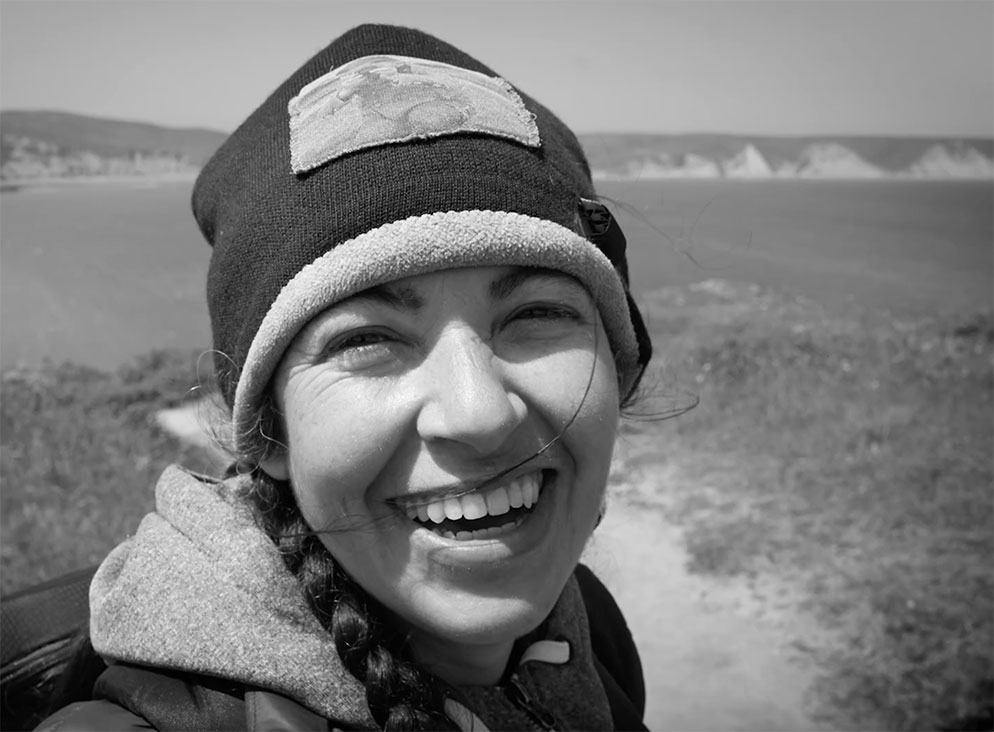Made Any Video Portraits Lately? Here’s Why You Might Want To.
Jen is one of the instructors for Kristi’s workshops. “That’s Jen—always smiling,” Kristi says. “She is one of those people who lights up a room with her smiles. She brings joy to everyone around, and I wanted people to feel that.”
Images are on the move. From web pages to advertising graphics to social media, video is everywhere. This is not news to Kristi Odom, who’s been creating stunning wildlife videos for some time now, and who, we found out, is now exploring something new for her story-telling moving images.
“They’re video portraits—quick takes that capture more than what a still-image moment tells or suggests about a person,” she says. The idea is to give viewers greater insight and more information than a still-image moment can capture or convey.
Professor Oscar Javier Amaya, known as Rupa, has a degree in biology with specialization in sustainable stingless bee-keeping in South America. “The first video portrait I did was of Rupa to connect him to his element, to what concerns him.”
The videos are meant to be looped to a what-feels-right length for the particular subject or situation, and they fall into two categories: personal videos of family, friends and acquaintances to capture personality and the dynamics of body language and expression; and videos with a commercial angle that indicate professions and passions. The aim is to show a little more about a person than a single image can and involve the viewer in the person’s story.
The aim is also to invite others to share the experience. “I want to encourage and maybe even inspire people to do these videos,” Kristi says. “I’m surprised I don’t see more of them—they’re creative fun, and really easy to do with the technology we have these days. I think there are a lot of ways people can use and appreciate them.”
Video portraits can also be a creative challenge. What is it about the person you’d select as a subject that you’d like to convey in your short-form video? And if you hand your camera to someone else, what is it that person would choose about you?
“Maddie is in the conservation department at the Denver Zoo, and she works to protect pikas,” Kristi says. “Conservation begins with making the wildlife real, and valued. People will care about what they relate to, and photography can help do that. That’s the promise and power of photography.”
Naturally Enough
Kristi’s made several video portraits that feature people involved in conservation projects and concerns, and these videos take her beyond her depictions of wildlife to make connections to individuals who are doing purposeful, consequential work. These portraits quickly and effectively humanize the cause—“through something so simple as a ten-second video”—and personalize efforts at preservation and restoration. They are the equivalent of a declarative sentence: Here are the people doing the work, not just talking about it.
“One of Alex’s specialties in the conservation department at the Denver Zoo is to try to protect the endangered boreal toad, Colorado’s only mountain species of toad.”
Kristi sees “an easy merge” between the taking of stills and the creation of a video portrait. “The same camera that takes the still image can add movement to portraiture. That’s what I’m exploring. I think people look at photo and video separately, but I feel there’s an easy intersection.” She cites online news stories that include videos as an example of that intersection. “There’s a different emotion in a narrative when there’s a little bit of video movement in the story.”
A video portrait of Colorado artist Nicholas Heilig. Kristi’s black-and-white videos were originally shot in color, which was removed in post-production.
The same camera that takes the still image can add movement to portraiture. That’s what I’m exploring.
Lily is Kristi’s niece, and one of the joys of creating these video portraits is the capture of moments like these.
Early Days
These short-form video portraits are a work in progress for Kristi, and she’s aware that “work” and “progress” are very much parts of the process. “This is something of a new space for me,” she says, “and something I’m still developing.”
Miles is Kristi’s stepson, here in a video portrait Kristi calls “a gift to myself—a kid being a kid, in moments observed that I want to celebrate.” It’s not looped because “it has the time to declare itself.”
On the personal side, one of the most exciting aspects of the video portraits is that Kristi can record memories of people she cares most about. On the commercial side, the videos “connect people to the things they’re passionate about.” In that category, she’s worked with individuals at the Denver Zoo who are involved with conservation efforts, and the zoo has shown interest in using some of the video portraits.
We think she’s onto something in her commitment to explore the possibilities of this type of imaging, which contains aspects of photojournalism and memory-making family photography in its creation of video portraits for the record, and for the heart.
The Setup for Slo-Mo
Kristi’s ways and means of achieving slow motion vary, but most of the time she’ll use the video settings menu on her Z 9 to select 120 fps (frames per second) at 4K, and then, in post-production, take the output playback down to 30 fps using Adobe Premiere Pro video editing software. “It’s not the only program for that,” Kristi says. “Alternatives include iMovie.”






